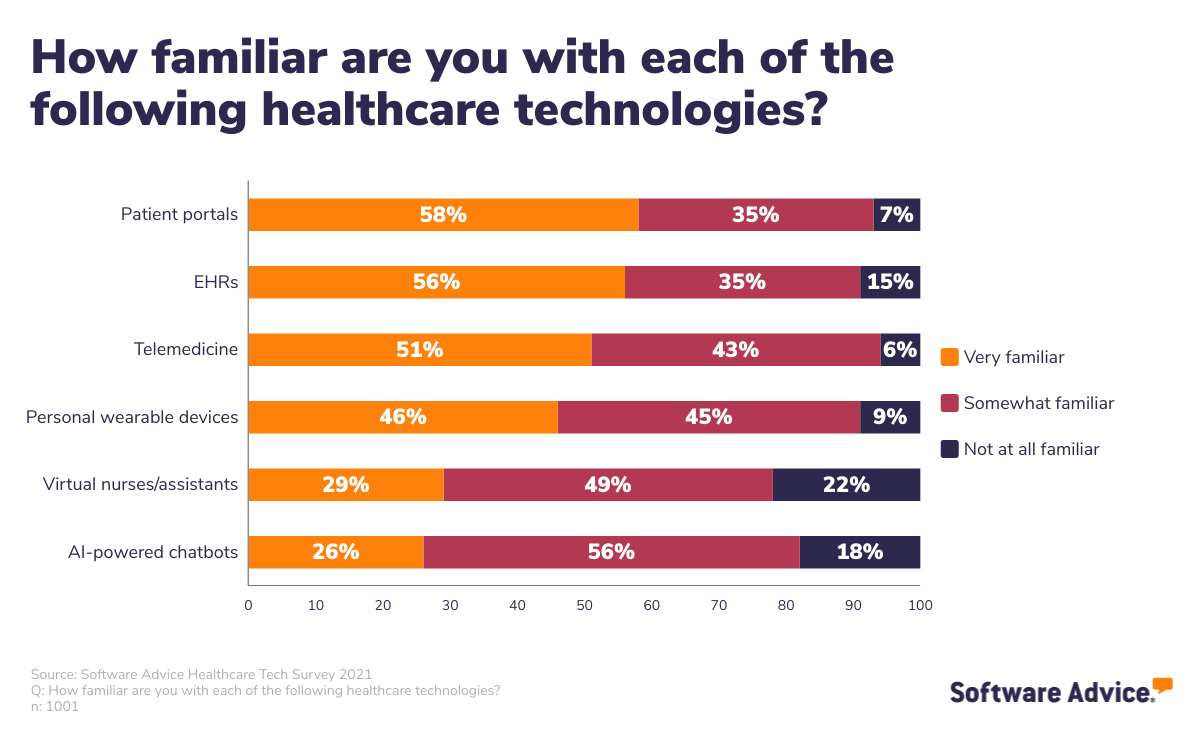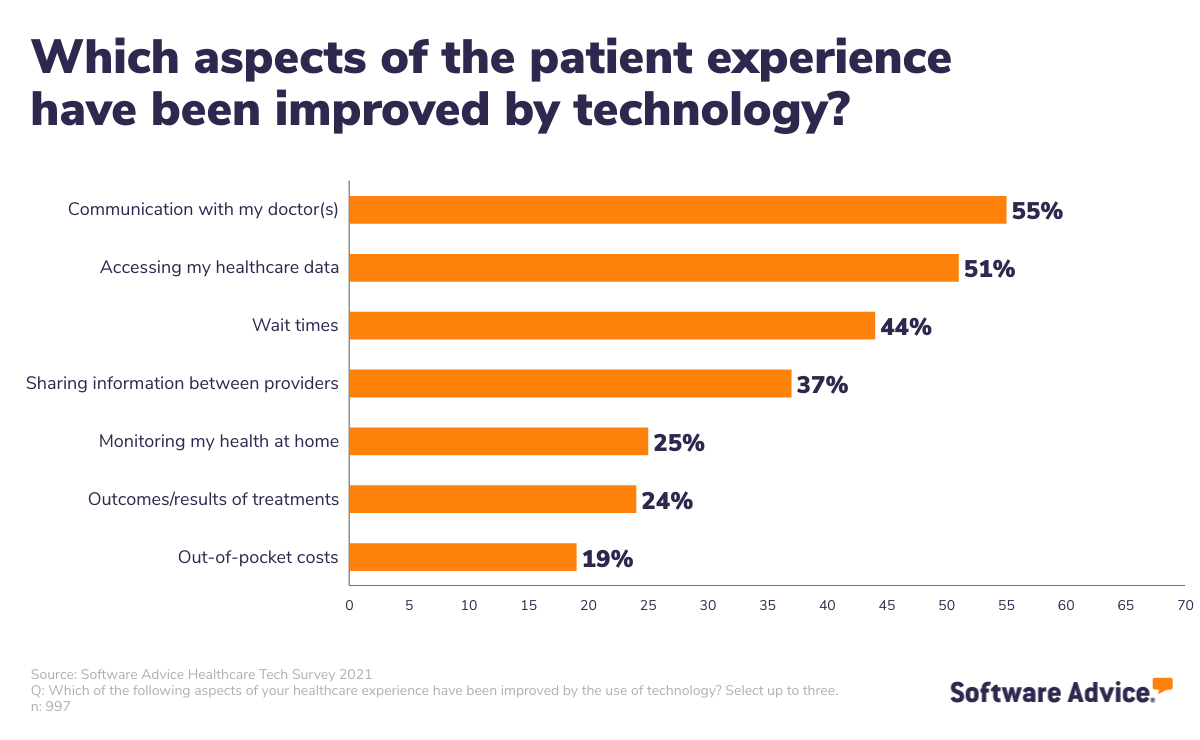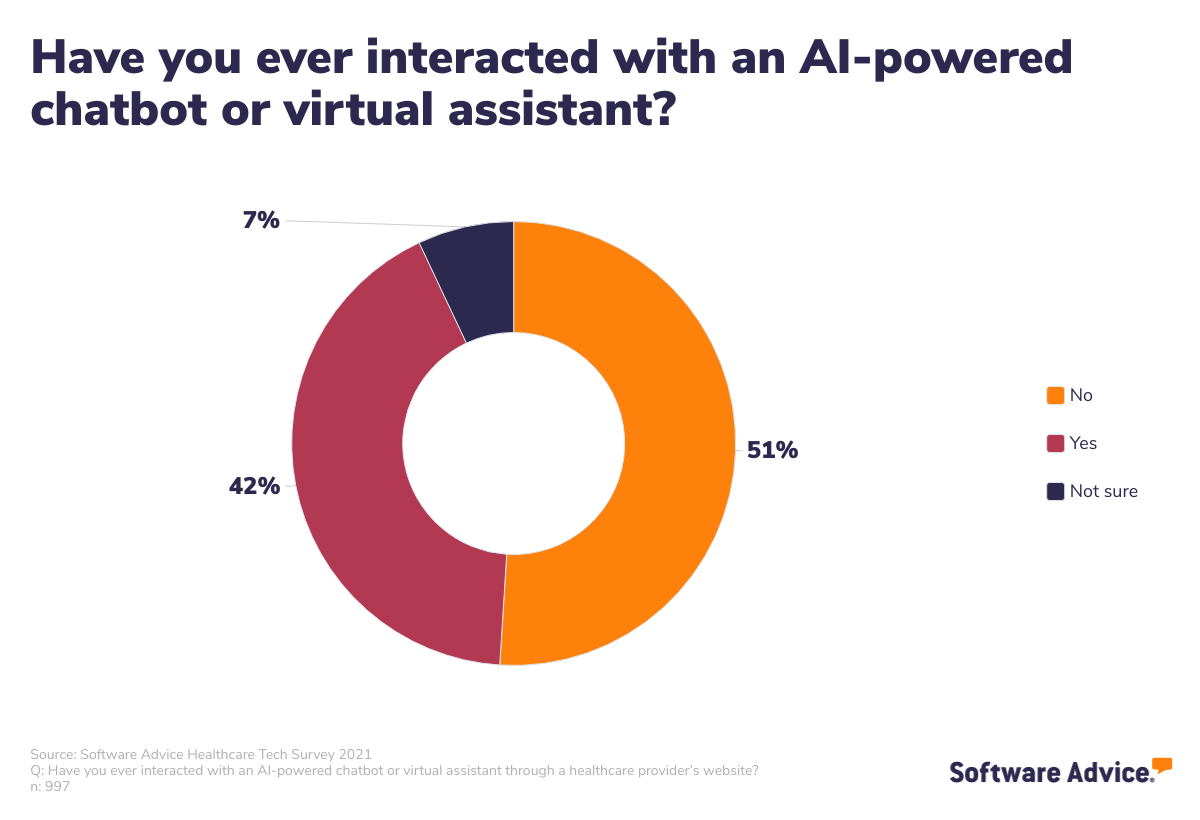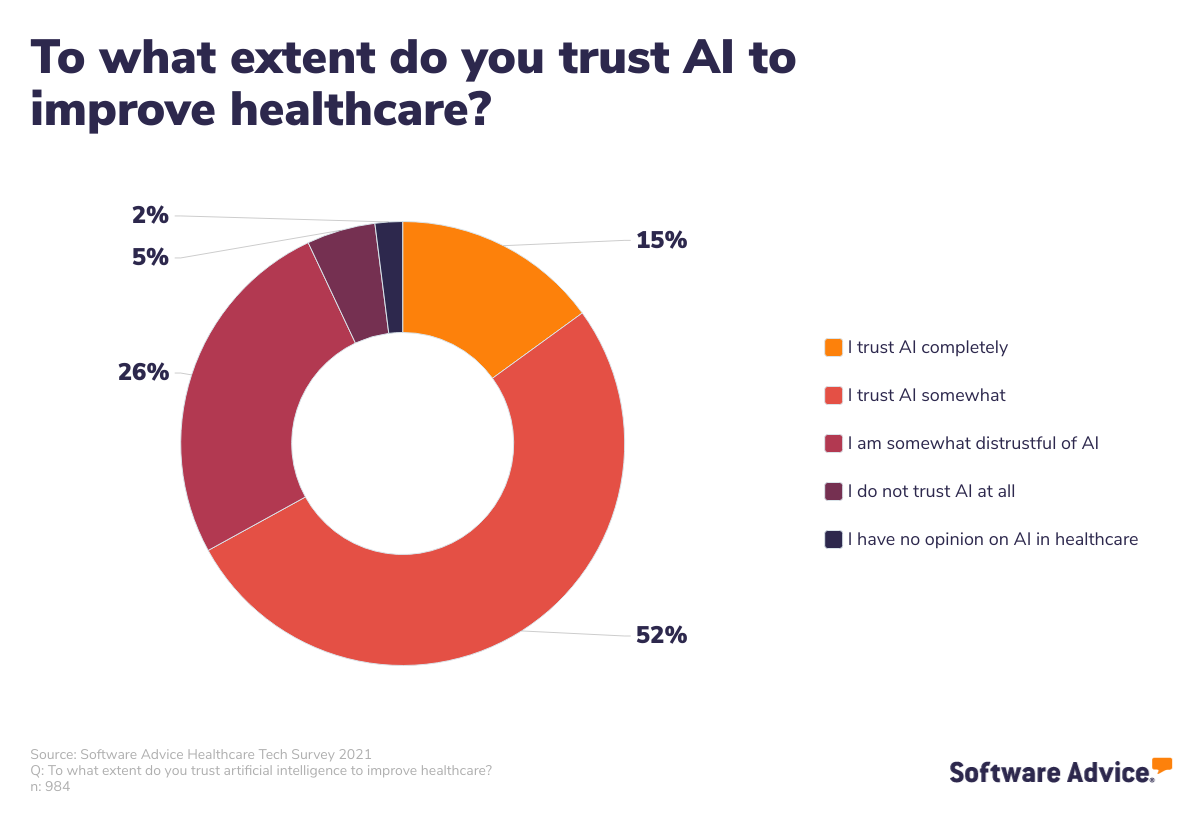Healthcare Technology Trends Will Improve the Patient Experience in 2021 and Beyond
In our ever-evolving, technologically advanced world, convenience is king—and that absolutely applies to the healthcare industry.
Improving the patient experience is a noble goal, but the truth is it’s a constantly moving target. With the development of patient-facing, digital health technologies such as wearable devices and patient portals, patients have come to expect a certain level of convenience and access to their own healthcare, and that expectation is only going to grow from here.
Fortunately, there are some very cool healthcare technology trends that are serving up the exact level of access and control that patients want today.
We surveyed 1,000 patients in the U.S. to learn exactly how they feel about certain healthcare technologies in order to help you better understand which software and tools to prioritize for your own patients.
HERE’S WHAT WE’LL COVER:
Patient portals, EHRs, and telemedicine top the
charts of most-familiar healthcare tech
Patients say communication and access to their
own healthcare information are most improved
Patients are fully on-board for AI applications in
Patient portals, EHRs, and telemedicine top the charts of most-familiar healthcare tech
There are, of course, dozens of different healthcare technologies that work behind the scenes to make patients’ lives better. However, we wanted to focus on patient-facing tools. The aim is to identify which tools will be the best investments for a smaller healthcare organization that wants to improve the patient experience on a limited budget.
To that end, we asked the patients in our survey how familiar they are with various patient-facing healthcare technologies. Here’s what we found:

Patient portals
Over half of patients (58%) are “very familiar” with patient portals, meaning they have personally used this type of software before. This is great news for doctors looking for a software solution with high ROI to improve their patients’ experiences. Some of the benefits of patient portals include:
Improved patient/doctor relationships
Better clinical outcomes
Optimized workflow
Patient portals allow patients to take on more of an active role in their healthcare by letting them self-schedule appointments, view their health information (e.g., lab results and medical histories), see their bills and easily make payments, and manage prescriptions.
Electronic health records
Oh boy, do we love EHRs. And it turns out, so do patients: 56% say they are very familiar with this software, and that’s not surprising when you consider the widespread adoption of EHRs among healthcare providers.
We’ve done studies that showed patients do prefer doctors who use EHRs, and that works out in your favor. Just a few of the benefits of using EHRs include:
Less time spent on simple processes
Improved delivery of care
Easier data collection
Better organization
There’s also the added benefit of security features that come standard with many EHR systems and are designed to protect patient data from being exposed in a security breach. With all the positive data available on EHR adoption, it’s obvious this is not a healthcare trend that’s going away anytime soon.
Telemedicine
OK, as amazing as EHRs are, the technology trend that is telemedicine has been the real MVP for patients—especially in the past year thanks to the COVID-19 pandemic.
Patients love telemedicine. They have for a while now, but the use and familiarity with telemedicine has grown exponentially since March 2020. Just a few of the benefits of telemedicine for patients include:
Quick access to care without having to leave their house
Reduced wait times
Improved quality of patient care
And there are plenty of benefits for doctors, too:
The ability to treat more patients
Improved communication with patients
Better relationships with patients
While the pandemic is winding down, it’s clear that patients will continue to enjoy the advantages and convenience of telehealth, so medical providers will be wise to carry on this service in 2021 and beyond.
Chat with a telemedicine software advisor now to learn about platforms that fit your budget and needs.
Patients say communication and access to their own healthcare information are most improved by technology
The great thing about modern healthcare technology trends is that they don’t just improve one aspect of the patient experience. In actuality, these technologies improve a whole lot of things for patients. And the reason we know that is because we asked them.

The top two picks for this question, communication with doctors (55%) and accessing healthcare data (51%), speak to patients’ increased desire for control over their own healthcare experience.
In 2019, we ran a survey to find out how patients felt about shared decision-making. We found that 97% of patients preferred a doctor who would take their preferences and concerns into account before determining a treatment plan.
Another way of saying that exact same thing is that in 2019, 97% of patients said they’d prefer providers who engage in shared decision-making.
This is actually great news for doctors. Evidence has shown that when patients take on a more active role in the decision-making process, patient care and outcomes improve. Which means investing in tools like patient portals that encourage patients to be more engaged with their healthcare is a great way to improve the overall patient experience.
Patients are fully on-board for AI applications in healthcare
Artificial intelligence has been a hot topic in the healthcare industry for a long time—from diagnostic algorithms to machine learning that powers decision support—but the applications of AI continue to be developed. When it comes to patient-facing AI tools, the most well-known tend to be things such as AI-powered chatbots and virtual assistants.
In fact, close to half of the patients in our survey have interacted with these types of chatbots themselves.

We also asked patients how much they trust artificial intelligence to improve healthcare.

Turns out, the majority of patients do in fact trust artificial intelligence when it comes to their healthcare. This is, once again, great news for doctors, as AI has already been proven to make life easier for healthcare professionals and patients alike.
Even something as simple as integrating an AI-based chatbot or virtual assistant into your practice’s website or patient portal can increase patient response rates and provide real-time support for patients who need it.
Equip your practice with the right tools
If you’re interested in exploring some of these healthcare technology trends to improve the patient experience, a great place to begin is by reading up on your options. Here are some buyer’s guides for tools mentioned in this piece to get you started:
When you’re ready to move on to selecting your software, our medical advisors can help you out by providing a curated list of software vendors that meet your explicit needs. To start that process, schedule a call or start a chat with an advisor anytime.
Survey methodology
To collect the data presented in this report, we surveyed 1,296 patients within the U.S. in May 2021. We used screening questions to narrow the respondents down to 1,001 with the relevant and timely experience needed to provide accurate answers to these survey questions.